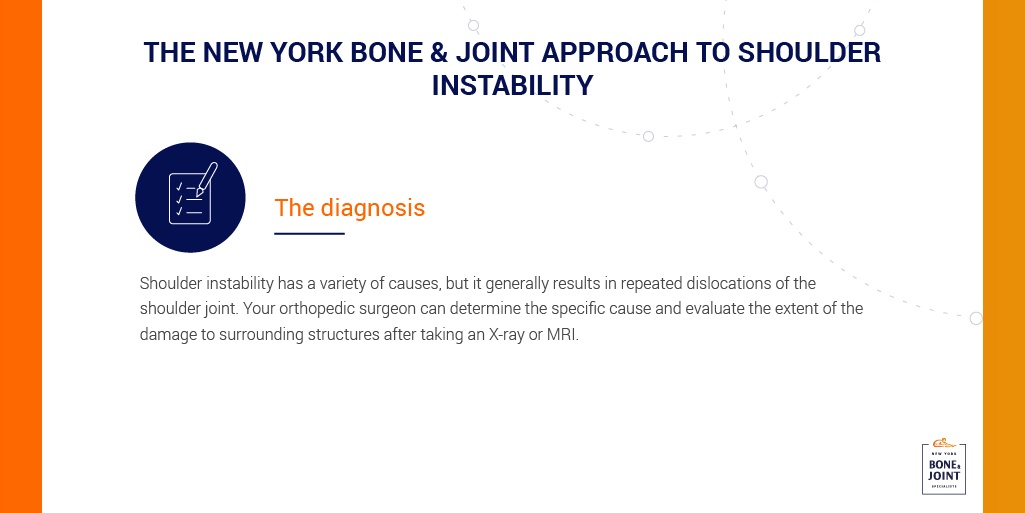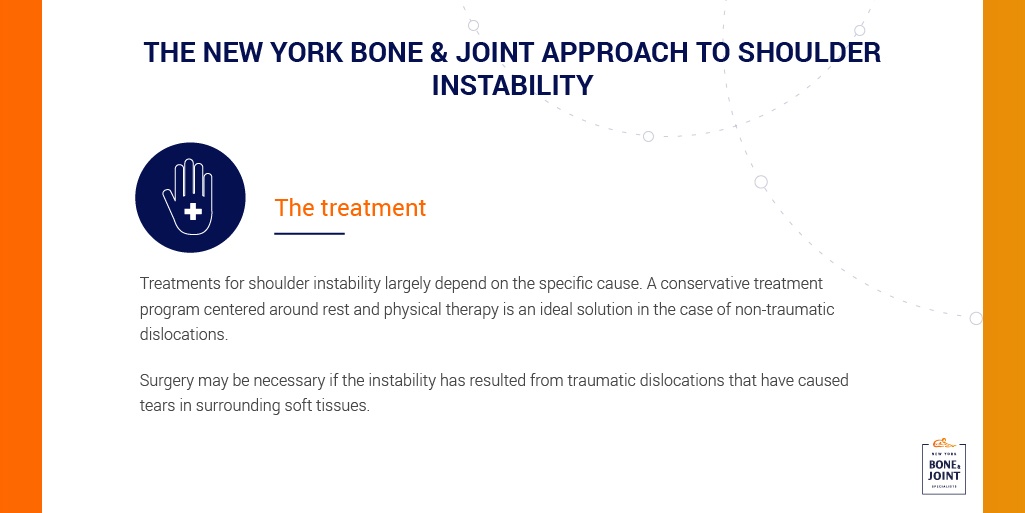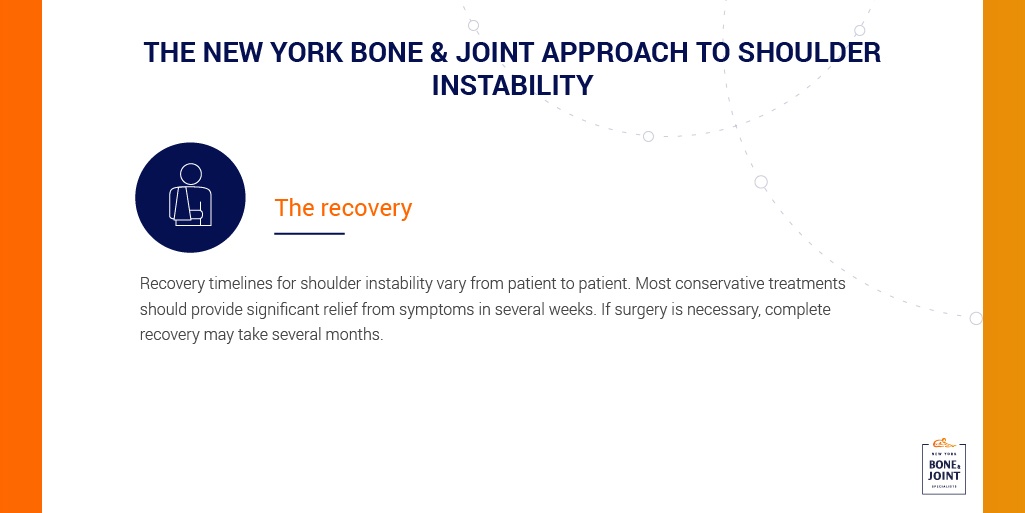WHAT IS SHOULDER INSTABILITY?
Chronic instability in the shoulder can have traumatic or non-traumatic causes. In most cases, however, it results in repeated dislocations of the shoulder joint. A history of dislocations can prevent the joint from functioning properly, creating a persistent sense of weakness in the shoulder and possibly lead to degeneration of the joint.
SHOULDER INSTABILITY SYMPTOMS
The symptoms of shoulder instability depend on the severity of the condition. Patients with particularly unstable shoulders may feel their shoulder bone regularly dislodge itself from the socket before spontaneously popping back in place. In most cases, however, the shoulder will suddenly dislocate without returning to the socket. Should this occur, the affected shoulder must be immediately reset by an orthopedic specialist.
The most common symptoms of a complete dislocation include:
- Severe pain or numbness from the shoulder to the forearm
- A popping or grinding sound when attempting to move the shoulder
- A noticeable displacement of the shoulder
- A loss of rounding in the shoulder
- A partial or complete inability to move the shoulder
Some patients may experience recurrent partial dislocations or subluxations rather than complete dislocations, with the shoulder bone slipping only partially out of the socket. The most common symptoms of a partial dislocation include:
- A painful clicking or popping sensation in the shoulder
- A sense that the shoulder has suddenly slipped out of place before resetting itself
- Pain or discomfort when attempting to rotate the shoulder
TYPES OF SHOULDER INSTABILITY

Shoulder instability can be classified according to traumatic and non-traumatic causes.
Traumatic Shoulder Instability
If the shoulder was initially dislocated after sustaining trauma, any lingering instability may be caused by a Bankart lesion, a tear in the cartilage and ligaments that stabilize the shoulder. As a result, the shoulder will repeatedly dislocate, causing additional tears in the cartilage and potential degeneration of the joint. These recurrent dislocations are usually anterior, protruding towards the front rather than the back, and they’re best treated with minimally invasive arthroscopic surgery.
Older patients suffering from traumatic instability may also sustain a rotator cuff tear during the initial dislocation. Since the rotator cuff tendons are responsible for providing the shoulder with its range of motion, they need to be surgically repaired along with the dislocation.
Non-Traumatic Shoulder Instability
In some cases, a shoulder will spontaneously dislocate without any direct trauma. These dislocations are often multi-directional, protruding in several directions simultaneously. Because the dislocations are likely caused by unusually lax ligaments in the joint, the shoulder is better treated with physical therapy and stabilizing exercises rather than surgery.
SHOULDER INSTABILITY TREATMENT

Conservative
Conservative treatments for shoulder instability are designed to rehabilitate the shoulder and restore its ability to function. They’re often recommended for non-traumatic dislocations or traumatic dislocations that don’t cause any significant tears. The most common conservative treatments include:
- Refraining from all activities that might exacerbate the condition
- Regularly icing the affected shoulder
- Anti-inflammatory medications
- Strengthening the rotator cuff
- Postural exercises
- Physical Therapy
Shoulder Instability Surgery
Should it be necessary, shoulder instability can also be treated with arthroscopic surgery. During this minimally invasive procedure, a surgeon will make several small incisions into the skin surrounding the joint, viewing the joint through a small camera inserted into one of these openings while operating on it through the other. Depending on the nature of the condition, the surgeon may then reattach torn tissues, remove damaged structures, or repair skeletal abnormalities before closing the incisions and dressing them as needed.
With decades of combined experience in arthroscopic surgery, New York Bone and Joint can quickly and effectively repair any unstable shoulder. Regardless of the specific cause, we’ll work with you to develop a personalized treatment plan that provides lasting relief from your symptoms and restores stability to the joint.
SHOULDER INSTABILITY RECOVERY
_________________________________
EXPERIENCING PAIN? DO YOU HAVE AN INJURY?
Our Specialists are here to help.
Book an appointment with NYC’s best orthopedic specialists to discuss your condition. Fill out the form below and you will receive a call from our office within 5-10 minutes. We’ll book an appointment at a time and location that work for you, and send you a reminder by email.













